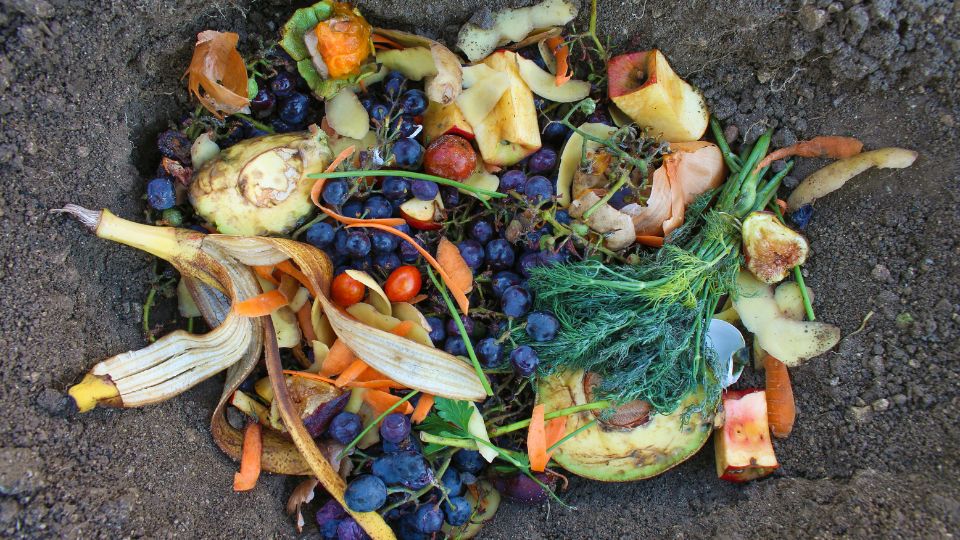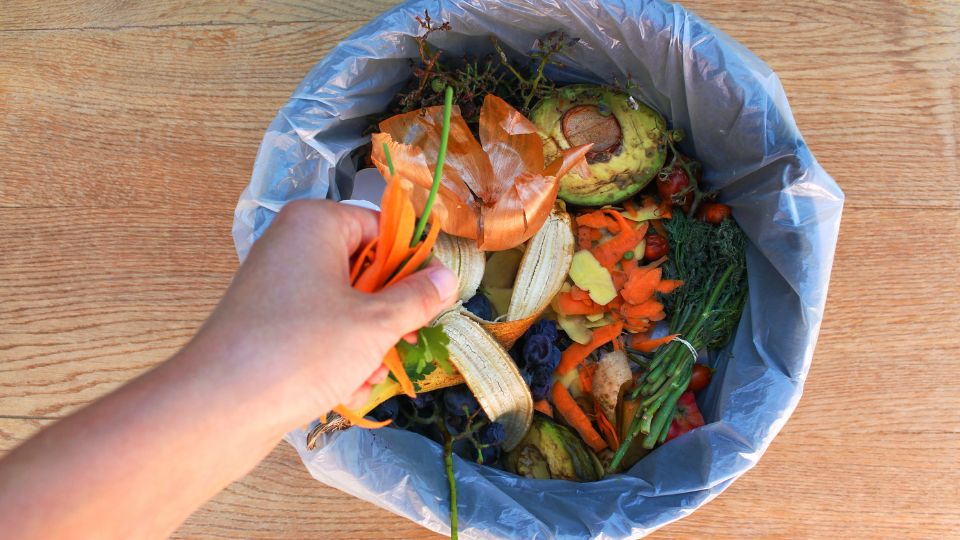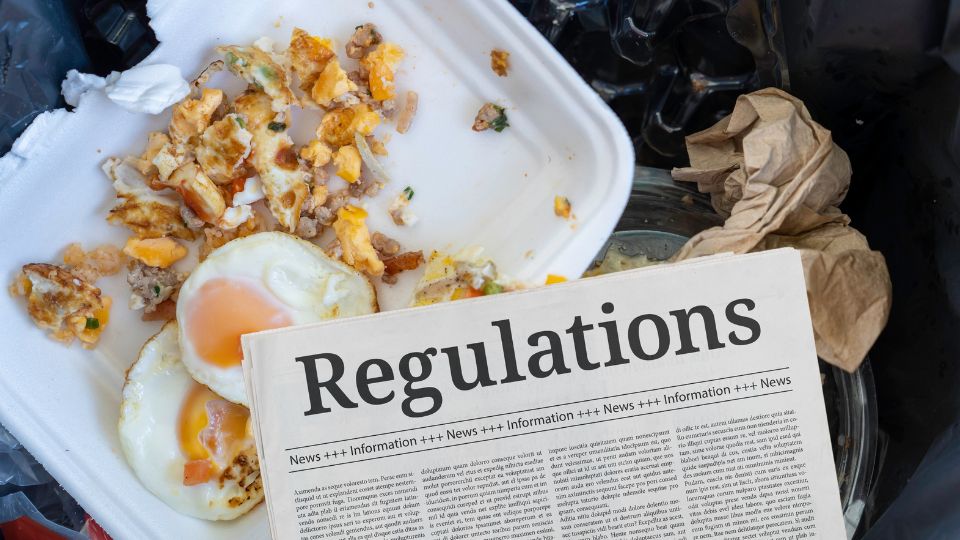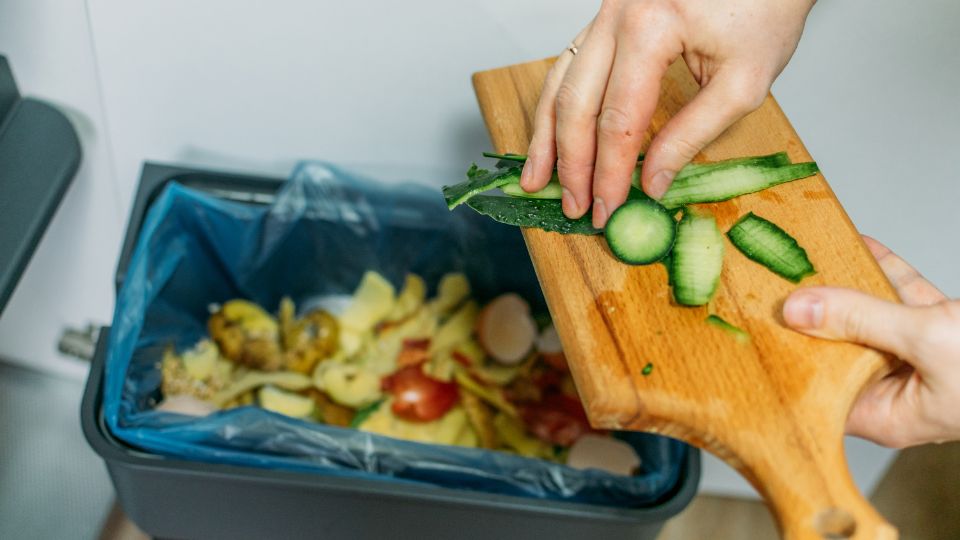
We cover all sorts of food waste statistics, facts, and advice in this mega-guide.
Use the contents table to click on the bits you’re most interested in:
Table of Contents
- Food waste facts and statistics
- What are some examples of food waste?
- How much food waste does the UK have?
- More food waste statistics
- How can I reduce food waste?
- What is the food waste legislation 2023 UK?
- Restaurant food waste statistics
- What do Supermarkets do with their food waste?
- Should you trust the labels on food packaging?
- The best food waste reduction businesses and apps
Food waste facts and statistics
- A third of all food produced globally is thrown away
- The UK wastes approximately 9.52 million tonnes of food every year.
- This total is enough to feed upwards of 30 million people a year, yet 8.4 million live in food poverty in the UK
- WRAP estimates that 70% of food waste comes from households (6.7 million tonnes), 16% from manufacturers, 12% from hospitality and food services, and 2% from the retail industry.
- 6.4 million tonnes (67%) of this wasted food could have been eaten! In UK households, it’s estimated that this number climbs to as high as 70%.
- The value of food wasted by UK households each year is estimated to be around £14 billion.
- The average household spends £470 on food that ends up in the bin every year.
- The UK produces the largest amount of food waste in Europe
- The hospitality and food service sector (including restaurants, hotels, and catering) generates around 920,000 tonnes of food waste annually.
- The retail sector in the UK contributes around 270,000 tonnes of food waste each year, with supermarkets being a major source.
- Only 7% of the total food surplus in the UK retail and manufacturing sectors is currently being redistributed.
- Food waste in the UK generates approximately 25 million tonnes of greenhouse gas emissions annually, contributing to climate change.
- On average, each person in the UK wastes around 70 kg of food per year, which is equivalent to 140 meals.
- The UK government has set a target to reduce food waste by 20% by 2025 and WRAP wants to get to 50% by 2030.
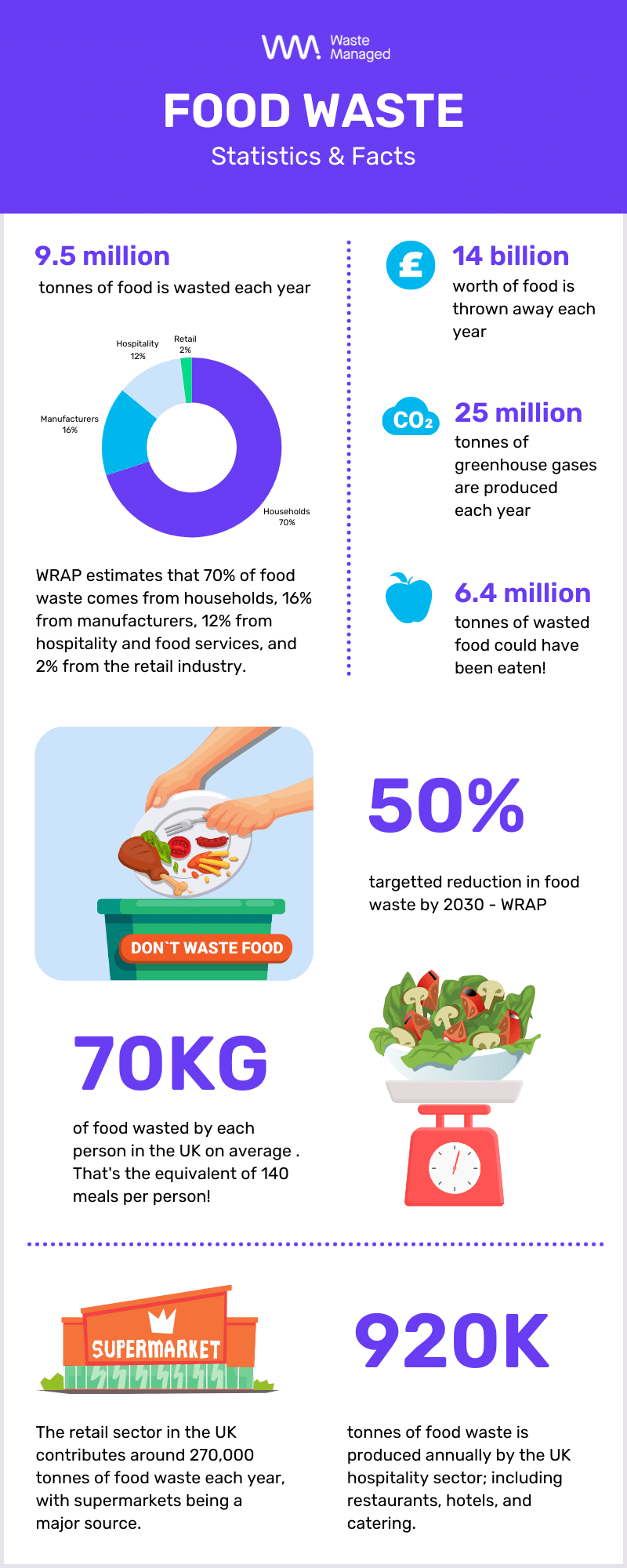
What are some examples of food waste?
There are many examples of food waste at each stage of its production to consumption. We’ve listed the types here:
- Plate Waste: Leftover food on plates, such as unfinished meals, uneaten fruits or vegetables, and discarded portions.
- Expired or Spoiled Food: Food that has passed its expiration date or has spoiled due to improper storage or handling.
- Trimmed or Peeling Waste: Parts of food items that are typically trimmed or peeled off and discarded, such as vegetable peels, fruit skins, or fat trimmings.
- Unsold Food: Food that remains unsold in supermarkets, shops, or restaurants and is eventually thrown away.
- Overstocked Inventory: Excess food inventory that expires or becomes unusable due to poor inventory management or changes in demand.
- Food Preparation Waste: Waste generated during food preparation, including trimmings, scraps, cooking byproducts, or through spillages or drops.
- Unharvested Produce: Fruits, vegetables, or other crops left unharvested and go to waste due to factors like labour shortages, adverse weather, or market fluctuations.
- Misshapen or “Ugly” Produce: Produce that is discarded because it does not meet the cosmetic standards set by retailers or consumers, despite being perfectly edible.
- Leftovers: Leftover food from meals at restaurants, events, or households that are not consumed and are subsequently discarded.
You can read more about the various types in our full food waste guide.

How much food waste does the UK have?
The UK wastes approximately 9.5 million tonnes of food every year.
This includes food waste generated at various stages of the food supply chain, including production, processing, distribution, retail, and households.
It’s important to note that this figure represents an estimate and may vary slightly from year to year based on various factors, including consumption patterns, agricultural practices, and waste management efficiency.
What are the top 5 most wasted foods in the UK?
The top 5 most wasted foods in the UK are:
- Bread: Bread is one of the most commonly wasted food items in the UK. It is estimated that approximately 900,000 tonnes of bread are wasted each year, both at the production and consumer levels.
- Potatoes: Potatoes are another major food waste contributor in the UK. About 750,000 tonnes of potatoes are wasted annually, often due to overbuying, spoilage, or aesthetic imperfections.
- Milk: Milk is a highly perishable product, and around 490,000 tonnes of milk are wasted each year in the UK. This waste can occur due to factors such as expiration, improper storage, or surplus production.
- Bananas: Bananas are a fruit that is often wasted in large quantities. Approximately 190,000 tonnes of bananas are discarded annually, primarily because of overripening or cosmetic imperfections.
- Salad and Vegetables: Salad and vegetables, including lettuce, tomatoes, cucumbers, and other leafy greens, contribute significantly to food waste. Around 170,000 tonnes of salad and vegetables are wasted each year in the UK, often due to spoilage, overbuying, or quality standards set by retailers.

These five food items represent a substantial portion of the overall food waste in the UK, and efforts to reduce waste in these categories can have a significant impact on tackling the issue of food waste in the country.
Why does the UK waste so much food?
There are several factors that contribute to why the UK wastes a significant amount of food. Here are some key reasons:
- Overproduction: Food overproduction occurs at various stages of the supply chain, including farms, processing facilities, and manufacturing plants.
Overestimating demand or producing more food than is needed leads to excess inventory, which can ultimately result in waste.
- Food Standards and Aesthetic Requirements: Retailers and consumers often have strict standards and expectations regarding the appearance of food products.
As a result, perfectly edible food that does not meet these cosmetic standards, such as misshapen fruits or vegetables, may be discarded.
- Confusion over Date Labels: Date labels, such as “best before” and “use by,” can cause confusion among consumers. Many people mistakenly interpret these labels as indicators of food safety rather than quality. As a precaution, consumers may discard food even if it is still safe to eat, contributing to waste.
- Consumer Behavior: Consumer habits, such as overbuying, improper storage, and discarding leftovers, play a significant role in food waste. Lack of meal planning, impulse buying, and changing lifestyles can result in food being wasted at the household level.
- Supply Chain Issues: Challenges in the supply chain, including inefficient transportation, inadequate storage facilities, and improper handling, can contribute to food waste. Inadequate infrastructure and logistics can lead to food spoilage and waste before reaching consumers.
- Retail Practices: Retailers often overstock perishable items to ensure shelves are fully stocked, which can increase the likelihood of food waste if products are not sold before their expiration dates. Additionally, promotional offers such as “buy one, get one free” can encourage consumers to purchase more than they need, leading to waste.
- Lack of Food Redistribution: Limited infrastructure and coordination for redistributing surplus food contribute to its wastage. Food that could be donated to charities or redistributed to those in need often ends up being discarded instead, unlike in other countries like Denmark which have various schemes in place to tackle this.
That being said, efforts are being made by various stakeholders, including government, businesses, and consumers, to address these issues and reduce food waste in the UK.
For instance, Wimbledon sends over 1 tonne of surplus food to charity and community organisations every year, ensuring that no edible food goes to landfill.
What is the target for food waste in the UK?
According to the Waste & Resources Action Program (WRAP), the UK is targeting a 50% reduction in food waste by 2030.
The government also has a target for 2025 of a 20% reduction. But this is quite low and more needs to be done.
Thankfully, new laws are coming into place in the UK that will help regulate food waste caused by businesses but more on this later.
More food waste statistics
Which countries cause the most food waste?
- United States: The United States is often cited as one of the countries with the highest levels of food waste. Estimates suggest that around 30-40% of the food supply in the US goes to waste, equating to approximately 80 billion pounds (36 million tonnes) of food wasted annually.
- United Kingdom: The UK is also considered to have a significant food waste problem. As mentioned earlier, the UK wastes approximately 9.5 million tonnes of food each year, with an estimated value of £14 billion.
- Australia: Australia ranks high in food waste generation. It’s estimated that Australians waste around 7.3 million tonnes of food annually, with the economic cost reaching about AUD 20 billion.
- Canada: Canada is another country that faces substantial food waste. Estimates suggest that Canadians waste approximately 35.5 million tonnes of food each year, which is equivalent to about 1,000 kilograms per person. That’s the same as a large Walrus!
- Germany: Germany is often mentioned among the countries with high levels of food waste. Germany wastes around 11 million tonnes of food annually.

Which countries are the best at minimising food waste?
Several countries are making notable efforts to reduce food waste and keep it to a minimum.
While progress varies, here are a few countries known for their successful initiatives in tackling food waste:
- South Korea: South Korea has implemented comprehensive policies and initiatives to combat food waste. The country has implemented a pay-as-you-throw system for food waste disposal, along with public awareness campaigns, education programs, and technology-driven solutions to reduce waste at the household, retail, and industrial levels.
- Netherlands: The Netherlands has been proactive in addressing food waste through various strategies. They focus on reducing waste at the production and retail levels, encouraging innovative packaging and distribution systems, promoting surplus food redistribution, and fostering collaborations among stakeholders in the food industry.
- Denmark: Denmark is recognised for its efforts in reducing food waste through a combination of regulatory measures, public campaigns, and collaborations with organisations and businesses.
The country emphasises prevention, redistribution, and recycling of food waste, utilising a combination of legal requirements, consumer education, and technological advancements.
- Japan: Japan has taken a multifaceted approach to addressing food waste, encompassing policies, consumer education, and technological advancements. The country has implemented the “Food Loss and Waste 2030” initiative, which includes measures such as promoting food recycling, redistributing surplus food, and raising public awareness about reducing food waste.
How can I reduce food waste?
As a business, there are several actions you can take to reduce and manage food waste effectively. Here are some suggestions:
- Conduct a Waste Audit: Start by conducting a waste audit to understand the types and quantities of food waste your business generates. This will help identify specific areas where waste can be reduced.
- Source Reduction: Minimise food waste at the source by improving inventory management, purchasing practices, and production planning. This includes accurately forecasting demand, avoiding overstocking, and using just-in-time inventory systems.
- Donate Surplus Food: Establish partnerships with local food banks, shelters, or charities to donate surplus edible food. This can help ensure that excess food is put to good use and benefits those in need.
- Implement Portion Control: Train staff to practice portion control and serve appropriate portions to customers. This can help reduce plate waste and ensure that customers are not served more than they can consume.
- Use an Eco-Friendly Waste Management Company: Collectors like us will ensure that your waste food is composted or put through the process of anaerobic digestion to turn it into biogas. These methods can help divert waste from landfills.
- Educate Staff and Customers: Provide training to staff on food waste reduction strategies, including proper storage and handling practices. Educate customers about the importance of reducing food waste and offer tips for minimising waste at home.
What if I’m not a business and want to reduce my food waste at home?
Reducing food waste at home requires conscious effort and small changes in habits. Here are some practical tips to help you reduce food waste as a household:
- Plan Meals and Make a Shopping List: Plan your meals for the week and create a shopping list based on those meal plans. This will help you buy only what you need and avoid unnecessary purchases.
- Buy Only What You Need: Be mindful of portion sizes and buy food quantities that you can realistically consume before they spoil. Avoid bulk purchases if you won’t be able to use all the food in time.
- Proper Storage: Learn how to store different types of food properly. Keep perishable items refrigerated at the appropriate temperature to extend their shelf life. Use airtight containers or wraps to store leftovers.
- First In, First Out: Practice the “first in, first out” rule by organising your fridge and pantry. Place newer food items behind older ones, so you consume the older items first.
- Understand Date Labels: Familiarise yourself with date labels such as “best before” and “use by.” Understand that “best before” refers to quality, not safety, and “use by” indicates when the food is at its peak freshness. Use your judgment and senses to determine if a food item is still safe to eat.
- Preserve and Freeze: If you have excess food that you can’t consume before it spoils, consider preserving it through freezing, canning, pickling, or making sauces, soups, or smoothies. This can extend the shelf life of food and prevent waste.
- Love Your Leftovers: Get creative with your leftovers by repurposing them into new meals or incorporating them into packed lunches. Label and date leftovers to keep track of how long they’ve been stored.
- Portion Control: Serve smaller portions and let everyone in the household serve themselves. Encourage seconds if needed, rather than overfilling plates initially.
- Compost Food Scraps: If you have a garden, consider composting fruit and vegetable scraps instead of throwing them away. Composting can reduce landfill waste and provide nutrient-rich soil for plants.
- Let People Know: Share your commitment to reducing food waste with your family members or roommates. Encourage them to adopt these practices and be mindful of food waste collectively.
How you should store food to prevent waste?
Proper food storage is crucial to prevent waste and maximise the shelf life of perishable items. Here are some guidelines for storing common food items:
- Fruits and Vegetables:
- Keep fruits and vegetables in separate compartments or containers.
- Store most fruits and vegetables in the refrigerator, but exceptions include bananas, potatoes, onions, garlic, and tomatoes, which are best stored at room temperature.
- Remove any damaged or spoiled pieces to prevent the spread of decay.
- Dairy Products:
- Store milk, yoghurt, and cheese in the refrigerator at the recommended temperature.
- Keep dairy products away from strong-smelling foods as they can absorb odours.
- Ensure containers are tightly sealed to prevent spoilage.
- Meat, Poultry, and Seafood:
- Store raw meat, poultry, and seafood in the refrigerator or freezer to maintain freshness.
- Place these items in airtight containers or wrap them tightly in plastic wrap or freezer bags.
- Use them within their recommended storage times for the best quality and safety.
- Bread and Bakery Items:
- Store bread in a cool, dry place, preferably in a bread box or airtight container to prevent moisture and mould growth.
- Freeze bread if you don’t plan to use it within a few days.
- Leftovers:
- Store leftovers in shallow airtight containers to cool them quickly and prevent bacterial growth.
- Label containers with the date to keep track of freshness.
- Consume leftovers within 3-4 days or freeze them for longer storage.
- Dry Goods (Flour, Rice, Pasta, etc.):
- Store dry goods in airtight containers in a cool, dry place to prevent moisture and pest infestation.
- Label containers with the purchase or expiration date for reference.
- Canned Goods:
- Store canned goods in a cool, dry place away from direct sunlight.
- Follow the “first in, first out” rule and consume older cans before newer ones.
Remember to check storage guidelines specific to each food item and adjust accordingly.
Regularly clean and organise your storage areas to maintain a clear view of the foods you have, reducing the risk of forgotten items and waste.
What is the food waste legislation 2023 UK?
The implementation of the new food waste legislation in England requires companies to revise their food waste management and disposal practices to ensure compliance.
The legislation, which follows the passing of the Environmental Act in 2021, aligns with the UK government’s goal of eliminating food waste to landfill by 2030, as stated in the Waste and Resources strategy for England (WRAP).
All food waste producing organisations in England must adapt their current practices to meet the new legislative requirements by the end of 2023.
This means that UK businesses must not throw their food waste into their general waste bins in order to prevent it from going to landfills.
In Scotland and Northern Ireland, businesses are already legally required to have a dedicated food waste bin if they throw more than 5KG of waste away each week.
Wales is expected to follow suit by April 2024 and England by early late 2024.
This is why we highly recommend getting a dedicated food waste collection service locked in now before inevitable price increases.
Restaurant food waste statistics
- It’s estimated that restaurants and food service establishments in the UK generate around 1 million tonnes of food waste annually.
- The hospitality sector, including restaurants, hotels, and catering services, accounts for approximately 10% of total food waste in the UK.
- Food waste represents a financial burden for the UK restaurant industry. It’s estimated that UK restaurants collectively lose around £682 million each year due to food waste.
- Plate waste is a significant contributor to food waste in UK restaurants. Studies suggest that around 39% of meals served in restaurants are wasted, with a substantial portion being left uneaten on plates.
- Various initiatives and organisations in the UK, such as the Sustainable Restaurant Association (SRA) and the Guardians of Grub campaign, work to raise awareness and support restaurants in reducing food waste.
What do Supermarkets do with their food waste?
Large supermarkets have a responsibility to reduce and minimise their food wastage.
In addition to using an environmentally friendly waste collector, they will also adopt various policies and schemes such as:
- Food Redistribution: Supermarkets often partner with food redistribution organisations or charities to donate surplus food that is still safe for consumption. This includes items approaching their expiration dates, but are still within the recommended quality and safety standards.
- Reduced Price Sales: Supermarkets may offer discounted prices on food items that are nearing their expiration dates or have minor cosmetic imperfections. This practice helps to sell the products before they become unsellable.
- Food Waste Recycling: Unsold or expired food that cannot be donated or sold is often sent for recycling. This can involve processes like anaerobic digestion, where the food waste is converted into biogas and used for energy production, or composting, where organic waste is transformed into nutrient-rich compost for agricultural purposes.
- Animal Feed: Some supermarkets collaborate with farmers or animal feed companies to divert food waste to be used as animal feed. This is particularly applicable to food items that are no longer suitable for human consumption but can still serve as feed for livestock like rotten fruit.
UK Supermarket food waste facts and statistics
- It’s estimated that food waste costs supermarkets in the UK around £1 billion per year.
- In a 2022 study, 61% of consumers feel brands, stores, and supermarkets should do more to help reduce waste, and 57% feel disappointed in the efforts made currently.
- The UK’s largest supermarket chains, including Tesco, Sainsbury’s, Asda, and Morrisons, have committed to achieving the Sustainable Development Goal 12.3 target of halving food waste by 2030.
- It’s estimated that supermarkets in the UK wasted around 200,000 tonnes of food, equivalent to over 350 million meals.
- In 2019, supermarkets in the UK redistributed over 50,000 tonnes of food to charities and community organisations.
Should you trust the labels on food packaging?
When it comes to trusting the labels on food packaging, it’s important to understand the different types of labels and their intended purposes.
Here are some common labels and what they typically indicate:
- Sell-By Date: This label is primarily intended for retailers to help manage inventory and ensure product quality. It’s not an indicator of food safety. Consumers can still consume the product after the sell-by date if it looks and smells fresh.
- Best-Before Date: This label signifies the period during which the manufacturer guarantees the food’s optimal quality, flavour, and texture. It’s not a safety date, and most foods can still be consumed after the best-before date, as long as there are no signs of spoilage.
- Use By Date: This label is a safety guideline indicating the date by which the food should be consumed to ensure it is safe to eat. It’s typically used for perishable items, such as meats and dairy products. It’s important to follow the use-by date to avoid potential foodborne illnesses.

While these labels can provide helpful guidance, it’s essential to use your judgment and employ sensory cues, such as the appearance, smell, and texture of the food, to assess its freshness and safety.
Additionally, proper storage and handling practices can extend the shelf life of food items beyond the labelled dates.
It’s worth noting that food waste is a concern, and many products are still safe and suitable for consumption even after the labelled dates.
Understanding the difference between quality and safety dates can help you make informed decisions and minimise unnecessary food waste.
The best food waste reduction businesses and apps
Too Good To Go
This app alerts users to when restaurants are looking to dispose of unsold food.
The restaurants create goody bags of mystery food and sell them to the app users for a heavily discounted price at specific time windows throughout the week.
Too Good To Go has expanded to 14 countries, boasts 28 million users worldwide and saves more than 100,000 meals every day.
NoWaste
NoWaste is an app that focuses on reducing household food waste in the UK.
With millions of tonnes of household waste generated each year, the app helps users manage and minimise this waste.
It provides features like inventory management, expiry date tracking, and meal planning to help users make the most of their food purchases and reduce unnecessary shopping.
The app also allows for syncing and sharing lists with others in the household, and provides insights on food waste and money savings, encouraging more sustainable habits.
Giki
Giki is an app that empowers consumers to make sustainable and ethical food choices.
By scanning product barcodes, users can access information about a product’s eco-credentials and sustainability, based on 13 badges awarded for factors like recyclable packaging and ethically sourced ingredients.
Giki helps users understand the environmental impact of their food choices and recommends alternative products with higher eco ratings.
This allows consumers to use their purchasing power for good and reduce waste, such as opting for products with better packaging to minimise landfill waste.
Imperfect Foods
Imperfect Foods is a subscription box service that delivers affordable groceries to your door, focusing on items that would otherwise go to waste due to visual imperfections.
The food is perfectly edible and delicious but may not meet the strict guidelines of traditional grocery stores.
The unique feature of Imperfect Foods is that customers have the opportunity to review and customise their orders before they are sent, allowing them to remove any unwanted items.

